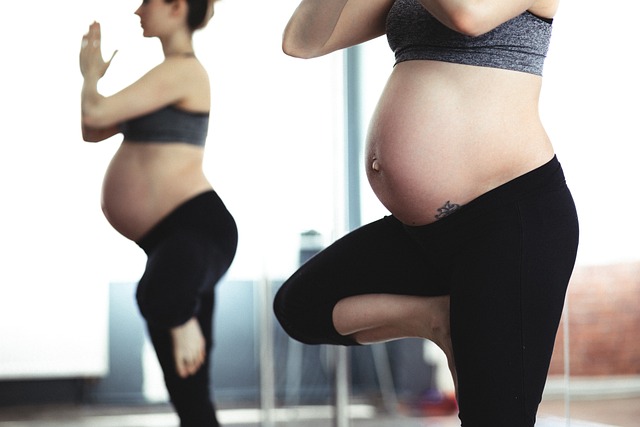Pregnancy is an exciting and life-changing experience. As your body adapts to growing a new life, it’s important to stay healthy and active, not just for you but also for your baby.
One great way to maintain health during pregnancy is through exercise. However, not every workout is safe at all stages of pregnancy. This guide breaks down safe exercises for each trimester, helping you stay active while keeping both you and your baby safe.
Why Exercise Matters During Pregnancy
Exercising while pregnant has many benefits. It can help you manage weight, improve your mood, boost your energy, and reduce common discomforts like back pain, constipation, and tiredness.
Exercise also helps improve blood circulation, lowers the risk of gestational diabetes, and strengthens your body to prepare for childbirth.
It’s best to stick to low-impact exercises like walking, swimming, and prenatal yoga. These exercises keep your muscles strong and improve posture without putting too much strain on your body.
It’s important to avoid activities that could lead to falls or involve any risk of injury to your belly, like contact sports or horse riding.
First Trimester: Staying Active in Early Pregnancy
The first trimester can bring a mix of excitement and physical challenges like nausea and tiredness. Exercising can help ease some of these symptoms while keeping you in good shape.
Low-impact activities like walking, swimming, and prenatal yoga are great choices during this stage.
They help strengthen muscles, keep your body flexible, and improve circulation without putting too much pressure on your body.
You can also do light strength training with small weights. Exercises like squats and modified push-ups help keep your muscles toned and get your body ready for the changes ahead. Just be sure to avoid overdoing it and listen to your body’s signals when you need to rest.
Second Trimester: Adjusting Your Routine as Your Belly Grows
As your baby grows and your body changes, you’ll need to make some adjustments to your exercise routine. Low-impact activities like walking and swimming are still good choices. However, you may need to modify some exercises to account for your growing belly.
Avoid exercises that involve jumping or putting pressure on your abdomen. Using a belly band or maternity belt can offer extra support while doing activities like walking or yoga.
It’s always a good idea to check in with your doctor about any changes to your routine to make sure you’re staying safe.
Third Trimester: Gentle Workouts to Prepare for Labor
By the third trimester, your body is getting ready for labor and delivery. Gentle exercises like prenatal yoga, swimming, and walking can help manage discomfort while keeping your body strong for the birthing process.
These activities can also help you relax, stay flexible, and strengthen your pelvic floor, which is crucial for childbirth.
During this stage, it’s important to listen to your body and not push yourself too hard.
Exercises that are easy on your joints, like yoga and swimming, are especially helpful as they reduce strain on your body while still keeping you active.
Cardiovascular Workouts: Benefits and Safety Tips
Cardiovascular exercises like walking and swimming are great for maintaining heart health and increasing stamina during pregnancy.
They also boost circulation, which is good for both you and your baby. These exercises are usually safe but should be done under your doctor’s guidance to ensure they’re suitable for your specific needs.
Avoid exercises that involve lying flat on your back after the first trimester, as this can reduce blood flow to the baby.
Also, make sure you stay hydrated and wear comfortable clothes to keep your body temperature in check while exercising.

Strength Training: Building and Maintaining Muscle Safely
Strength training during pregnancy helps maintain muscle tone and prepares your body for the physical demands of pregnancy and childbirth.
Stick to low-intensity exercises that don’t strain your core or back too much. Focus on exercises that target your legs, back, and pelvic floor for maximum benefits.
Eating a balanced diet with plenty of lean proteins and whole grains will help support muscle growth, and don’t forget to drink plenty of water to stay hydrated while working out.
Yoga and Pilates: Relaxing and Strengthening for Moms-to-Be
Yoga and Pilates are excellent exercises for pregnant women because they help build strength and flexibility while promoting relaxation.
Prenatal yoga focuses on gentle stretches and breathing techniques, which can relieve tension and prepare your body for childbirth.
Pilates strengthens your core and improves posture, helping reduce common pregnancy pains like backaches.
Always choose classes designed specifically for pregnancy, as these will offer safe modifications for your changing body.
Low-Impact Exercises: Safe and Easy Options
Low-impact exercises like swimming and walking are fantastic ways to stay active during pregnancy. Swimming offers a sense of weightlessness, which takes pressure off your joints and can help reduce swelling.
Walking is a simple yet effective way to keep your heart healthy, and it can easily be worked into your daily routine.
If you’re looking for variety, prenatal yoga, and Pilates are also excellent low-impact options. These exercises focus on gentle movement, strength, and flexibility, making them safe and beneficial for both your body and mind.
Creating a Balanced Workout Routine During Pregnancy
A well-rounded pregnancy exercise routine should include cardio, strength, and flexibility exercises.
Each trimester brings different changes to your body, so it’s important to adapt your workouts as needed to stay safe and healthy.
By staying active, you’ll improve your overall well-being, reduce discomfort, and get your body ready for labor and motherhood.
Always talk to your doctor before starting or changing any exercise routine to make sure it’s safe for both you and your baby.
Author’s Bio
Chantelle Torres is a dedicated advocate for women’s health and well-being, working at PK Women’s Clinic. With a passion for empowering women through education, she is committed to ensuring that every woman has access to the knowledge and resources they need to make informed decisions about their health.








